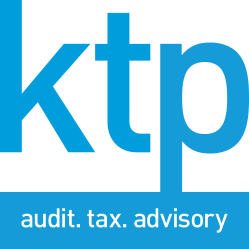(TAX UPDATE) Why You Cannot Strike Off a Sdn Bhd with Bank Balance and Accumulated Loss ... A Real Case from My Audit Files
(TAX UPDATE) Why You Cannot Strike Off a Sdn Bhd with Bank Balance and Accumulated Loss … A Real Case from My Audit Files
“Bro, Can I Strike Off My Sdn Bhd? Got RM100,000 in the bank with accumulated loss ”
This was a real incident I encountered recently.
A client came to me, hoping to strike off his dormant Sdn Bhd. The company had stopped operations. No liabilities. But still had RM100,000 in the bank. On paper, the accounts showed accumulated losses.
He thought it would be simple. Submit to SSM. Close file. Save cost.
But it is not so simple.
Strike Off Is Not Allowed If Company Has a Bank Balance
Under Section 550 of the Companies Act 2016, one of the key requirements for strike off is that the company must have no assets and no liabilities.
Even one ringgit in your bank account is considered an asset. This disqualifies you from using the strike-off method. Your application to SSM will be rejected.
So what’s the correct way?
Can You Just Pay Out the Bank Balance as Dividend?
Same director ask a following question like this.
“Why not just declare RM100,000 as dividend to clear the bank balance?”
Here’s the legal answer.
Under Section 131 of the Companies Act 2016, a company can only declare dividends out of its retained profits. On top of that, directors must be satisfied that the company will remain solvent after the dividend is paid. This means the company can still meet its debts as they fall due.
If the company has no profits and still has outstanding obligations, any dividend declared can be challenged. Directors who approve such payments may face personal liability.
The Proper Closure Method : Members’ Voluntary Winding Up (MVWU)
Since the company has cash in the bank and no liabilities, it is considered solvent. The proper legal method to close a solvent company is through Members’ Voluntary Winding Up or MVWU.
Accumulated losses do not disqualify a company from MVWU. Solvency is based on the ability to pay debts in full within 12 months, not on the profit and loss account.
How MVWU Works
Step 1: Directors’ Declaration of Solvency
A form under Section 443 must be signed by the majority of directors. It confirms that the company can settle all debts within 12 months and includes a Statement of Affairs.
Step 2: Shareholders’ Special Resolution
Shareholders must pass a special resolution to wind up the company and appoint a licensed liquidator. The liquidator must be a Chartered Accountant with a valid MIA public practice certificate.
Step 3: Liquidator Takes Over
The liquidator takes control of the company’s bank account. All liabilities are settled, and the remaining balance is distributed to shareholders. This is a return of capital, not dividend.
Step 4: LHDN Tax Clearance
The liquidator applies for tax clearance with LHDN, submits CP7A, and finalises any outstanding tax obligations.
Step 5: Final Return and Dissolution
Once all distributions and filings are complete, the liquidator submits the final return to SSM. The company is then officially dissolved.
What Happens to Accumulated Losses
In MVWU, the balance of cash after paying liabilities is distributed as capital to shareholders, not as dividends.
There is no need to “clear” accumulated losses. These are written off when the company is dissolved. As long as the company is solvent, the surplus can still be returned to shareholders legally.
My Important Warnings
Do not withdraw funds from the bank account before MVWU. This may be considered an unauthorised distribution.
Do not close the bank account. The liquidator needs access to settle debts and handle distribution.
Do not attempt dividend payout without retained profits and solvency confirmation. It breaches Section 131.
Keep your records for 7 years even after dissolution. This is a legal requirement.
My Advice as an Auditor
Although I am not a licensed liquidator or company secretary, I often advise clients on compliance and practical closure steps. In this case, I guided the client through the right process and connected them with a liquidator.
The key takeaway is simple.
If your company has cash, accumulated losses do not give you a shortcut. MVWU is the proper path.
Visit Us
Wisma KTP, 53 Jalan Molek 1/8, Taman Molek, 81100 Johor Bahru
Wisma THK, 41, Jalan Molek 1/8, Taman Molek, 81100 Johor Bahru
KTP (Audit, Tax, Advisory)
An approved audit firm and licensed tax firm operating under the KTP group based in Johor Bahru providing audit, tax planning, advisory and compliance services to clients
Website www.ktp.com.my
Instagram https://bit.ly/3jZuZuI
Linkedin https://bit.ly/3sapf4l
Telegram http://bit.ly/3ptmlpn
THK (Secretarial, Bookkeeping, Payroll, Advisory)
A licensed secretarial firm in Johor Bahru providing fast reliable incorporation, secretarial services, corporate compliance services, outsourcing bookkeeping, and payroll services to clients
Website www.thks.com.my
Facebook https://bit.ly/3nQ98rs
KTP Lifestyle
An internal community for our colleagues on work and leisure.
Tiktok http://bit.ly/3u9LR6Q
Youtube http://bit.ly/3ppmjyE
Facebook http://bit.ly/3ateoMz
Instagram https://bit.ly/3jZpKLo
KTP Career
An external job community on vacancies in Johor Bahru for interns, graduates & experienced candidates.
Instagram https://bit.ly/3u2PxHg
Facebook http://bit.ly/3rPxz9o
